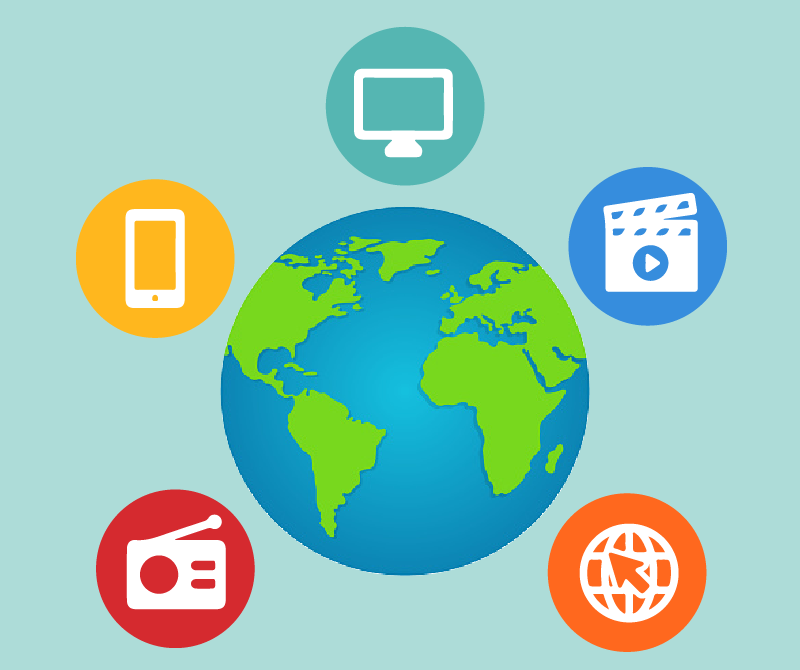Breaking diaspora engagement barriers through effective media communication

By Theresa R. Fianko

Picture by fauxels on Pexels.
After the outbreak of COVID-19 in 2020, countries implemented restrictions to curb the spread of the virus, affecting mobility around the world. A United Nations Population report estimates that, with an assumption of zero growth in the number of migrants between 1 March and 1 July 2020, the number of international migrants may have decreased by nearly 2 million against the initial expectations. As a result, foreign missions and other stakeholders have had to adopt a new approach to engaging members of their diaspora, in addition to dealing with humanitarian, political and socio-economic concerns.
Diaspora engagement relates to how external stakeholders such as governments and other organisations interact with members of its diaspora, in addition to how the diaspora community itself cooperates with its people and institutions as internal stakeholders. All work together to harness the development of both their homelands and countries of residence. An individual or organisation within a diaspora is not only a reflection of the country to which they have migrated, but also a reflection of their country of origin.
Generally speaking, when people think of harnessing diaspora power, it relates to remittances and how financial investments will be channelled to their homelands. This is indeed an integral part of diaspora development, considering studies have shown that in 2020, remittance flows surpassed the sum of Foreign Direct Investments (USD 259 billion) and overseas development assistance (USD 179 billion) in low- and middle-income countries. However, focusing overly on remittances means we can lose touch with broader perspectives about the power of diaspora.
Diaspora engagement aims to maximise and harness the power of the resources and capacity of multiple stakeholders. Dr Martin Russell, an advisor at the Networking Institute and well-known global diaspora engagement advocate, stated in a feature that three questions need to be asked from the start to ensure effective diaspora engagement: Who is your diaspora? Where are they? What do they do?
A lack of data is by far the biggest hindrance to diaspora engagement because it is the very tool that enables effective policymaking and development. Access to data is characterised by little or no diaspora mapping and low awareness about the existence of organisations and their initiatives. This often leads to selective engagement, which does not empower diaspora communities.
Digital communication is key to bridge the communication gap in effective diaspora engagement. Digitisation has been heightened by the impact of COVID-19, and more than ever traditional mass media communication channels such as television and radio have been complemented by modern omnichannel platforms. This begs the question: how can global diasporas take advantage of these digital platforms to bring about the desired awareness, provide data and lead to development?
It is critical that diaspora communities maintain a directory of their people, groups and organisations. Most diaspora organisations, however, are self-funded and so often do not provide a budget for developing and maintaining a website or diaspora mobile applications, for example. Support from governments and other development partners would help to harness the power of social media platforms to communicate their message.
Advocates are gradually becoming more active in diaspora media, and there are several examples of different organisations and individuals using their power to break the communication barrier. Diaspora Digital News, for example, is a social impact online broadcast platform mainly focused on shedding light on the works of diaspora organisations, their stakeholders and others who are making an impact transnationally without losing their identities. Through its platform, it showcases the work of new and existing diaspora organisations and personalities, so that communities can tap into their knowledge and expertise for inter-country development. Meanwhile, the Global Irish Diaspora Directory, supported by the Government of Ireland, includes 1,000 Irish welfare, culture, sports, business and social organisations around the world, providing data that its diaspora can connect with. This success story is a good case study for diaspora engagement. Advocates of diaspora engagement, such as Loksan Harley, are also using online media platforms to discuss and bring solutions to issues concerning migration and diaspora through the Migration & Diaspora podcast.
Finally, in its recent report, Shabaka, in association with the EU Global Diaspora Facility (EUDiF), recommends that in order to properly engage diasporas in times of crisis, we need to create targeted communication channels and content for and by the diaspora, in addition to developing communication targeted at diaspora resource and skills mobilisation. A good example of the use of media communication in times of crisis is a group of Chinese diaspora YouTube Vloggers, who are orienting their discourse to highlight critical health information during the pandemic.
Living in the digital era has provided us with the opportunity to seamlessly bring awareness about people, organisations and activities within the diaspora, whilst providing critical data to enable proper engagement. With enhanced media communications being developed with each passing day, the possibilities of what we can do when we harness this power for diaspora engagement are endless.
Theresa R. Fianko
Theresa R. Fianko is an Integrated Marketing/Media Communications Professional and the Managing Editor of Diaspora Digital News. Based in Dubai and having lived in the diaspora for over thirteen years, she uses her experience, knowledge and expertise to advocate for diaspora engagement. She believes in the power of the media as a tool in shaping minds positively and so advocates for how its gains can be capitalised upon, especially within the diaspora.
This article is part of the issue ‘Empowering global diasporas in the digital era’, a collaboration between Routed Magazine and iDiaspora. The opinions expressed in this publication are those of the authors and do not necessarily reflect the views of the International Organization for Migration (IOM) or Routed Magazine.


